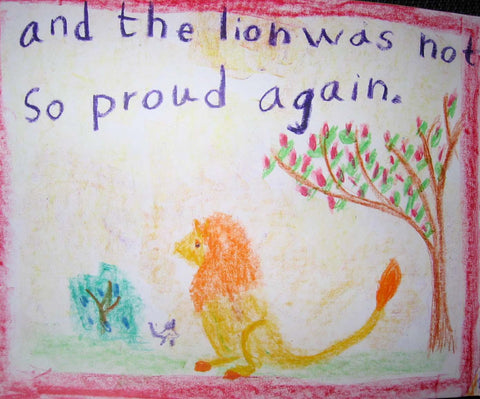The Green Curriculum in Waldorf Schools ~ Part II October 02 2015
Waldorf Schools strive to co-exist in a profoundly felt, right relationship with the Earth throughout the grades, building inner habits that prepare children to be environmentalists on the deepest levels. The practices and experiences which engender these inner habits are embedded in all aspects of the Waldorf School curriculum from grade one to grade twelve. Over the upcoming weeks, we are exploring and highlighting some of the elements and ways in which environmental sustainability lives and breathes through each grade of the Waldorf curriculum. Below, we continue with Grade Two!
From Roots to Bloom: Green in Grade Two
In second grade, many nature-filled legends and fables take center stage, as the children grow into greater awareness of contrast and difference in the world around them. As a result, they are increasingly available for stories about human nature and ideals. Many stories emphasize the relationship and responsibility between human beings and the natural world, especially the animal kingdom.  And very often, these stories anthropomorphize the natural world in a beautiful way – invoking animals that speak and listen, laugh and learn. The stories provide colorful depictions of generosity and greed, courage and cowardice, and other contrasting pictures of human attributes. But by drawing out unique identities in the animal kingdom – a wise owl, a mischievous fox, a graceful swan – the fables not only offer gentle lessons, but help to develop the children’s inner sensibilities. Their moments of joy, sadness, wonder, and compassion in listening to fables (and acting them out in a class play) support the steady development of an ecological and environmental mindset borne from the inside out. Second grade also welcomes explorations in symmetry, through form drawing and eurythmy throughout the year. In this way, the child develops an inner sense for the beauty of balance and stability, embodying symmetry in their physical activities through art and movement. These sensibilities provide the beginnings of faculties needed to perceive and discern harmony and discord in the world around them in later life. This is an essential capacity of the environmental stewards, activists and problem-solvers of the future. They will need deep inner resources to listen to nature’s inherent wisdom and protect her with reverence.
And very often, these stories anthropomorphize the natural world in a beautiful way – invoking animals that speak and listen, laugh and learn. The stories provide colorful depictions of generosity and greed, courage and cowardice, and other contrasting pictures of human attributes. But by drawing out unique identities in the animal kingdom – a wise owl, a mischievous fox, a graceful swan – the fables not only offer gentle lessons, but help to develop the children’s inner sensibilities. Their moments of joy, sadness, wonder, and compassion in listening to fables (and acting them out in a class play) support the steady development of an ecological and environmental mindset borne from the inside out. Second grade also welcomes explorations in symmetry, through form drawing and eurythmy throughout the year. In this way, the child develops an inner sense for the beauty of balance and stability, embodying symmetry in their physical activities through art and movement. These sensibilities provide the beginnings of faculties needed to perceive and discern harmony and discord in the world around them in later life. This is an essential capacity of the environmental stewards, activists and problem-solvers of the future. They will need deep inner resources to listen to nature’s inherent wisdom and protect her with reverence.
~ Sarah Hearn, Waldorf Alum.
